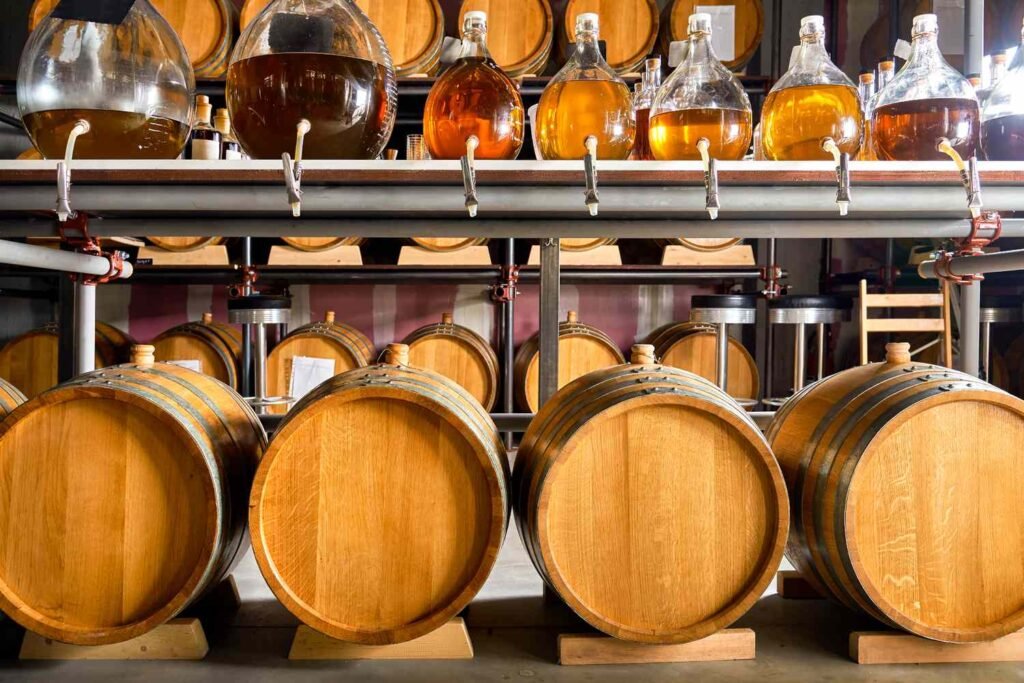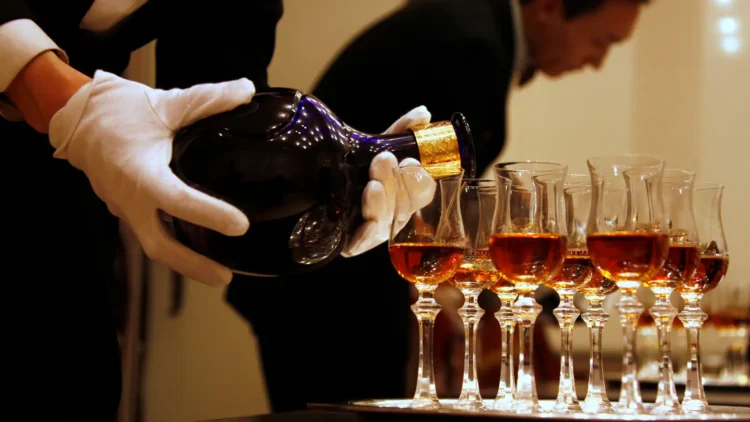Whiskey aging is a complex process that significantly impacts the final flavor profile of the spirit. The interaction between the whiskey and the barrel, combined with the time the whiskey spends aging, contributes to the development of rich and varied flavors. These changes occur through a variety of chemical processes, environmental influences, and wood characteristics that collectively shape the whiskey’s taste, aroma, texture, and color.
The Role of Barrels in Whiskey Aging
The barrel is a crucial element in the aging process, as whiskey interacts with the wood over time, extracting compounds that influence the flavor profile. Whiskey is typically aged in oak barrels, which are porous and allow for slow, gradual interaction between the liquid and the air inside the barrel. As whiskey ages, it moves in and out of the wood pores due to temperature fluctuations, further enhancing the extraction of flavors from the wood. There are several factors involved in how the barrel itself affects the whiskey’s flavor:
- Wood Type: The type of oak used—typically American oak, European oak, or Japanese oak—affects the flavor. American oak is known for imparting sweeter, vanilla-like flavors, while European oak can contribute more spiced, fruity, and tannic characteristics.
- Charring/Toasting: Barrels are often charred or toasted before whiskey is aged in them. Charring caramelizes the sugars in the wood, imparting rich flavors such as caramel, vanilla, and smokiness. Toasting, on the other hand, may bring out softer, woodier flavors with notes of spice and nuttiness.
- Barrel Size: The size of the barrel affects the aging process. Smaller barrels have a larger surface area relative to their volume, allowing for more contact between the whiskey and the wood, which accelerates aging and results in more intense flavors. Larger barrels, however, result in a slower aging process, often producing subtler and more refined flavors.
Chemical Interactions During Aging
The aging process is not simply a matter of time; it involves complex chemical reactions that transform the whiskey’s composition. Some of the most important interactions occur between the whiskey and the compounds found in the oak, as well as between the whiskey and the air inside the barrel.
- Lignins and Vanillin: Oak contains lignins, which break down over time, releasing compounds like vanillin—responsible for the sweet, vanilla-like flavor in whiskey.
- Tannins: These astringent compounds contribute to the mouthfeel of whiskey, adding dryness and structure. Tannins help balance out the sweetness of the whiskey and can provide a touch of bitterness when over-extracted.
- Hemicelluloses and Caramelization: Hemicelluloses in the oak break down into sugars, which contribute to caramel-like sweetness, adding complexity to the flavor profile. Additionally, the charring process creates caramelized sugars, adding rich toffee and nutty flavors.
- Oxidation: Exposure to air causes oxidation, which helps mellow harsh flavors and allows more complex aromas to develop. The whiskey’s color deepens as it oxidizes, and over time, this interaction softens the intense notes of alcohol, rounding the whiskey’s flavor.
How Time Affects Whiskey Flavors
Aging time is one of the most important factors influencing the flavor profile of whiskey. As whiskey ages, it undergoes gradual changes. Initially, whiskey has a harsh, alcohol-heavy taste that becomes more refined and mellow with time. Over the course of aging, the whiskey extracts more flavor from the wood, and the balance between the spirit and its barrel becomes more pronounced.
- Young Whiskey: In its early stages, whiskey tends to have more prominent alcoholic and sharp notes. It may also have a more pronounced grain flavor, especially if it has not been aged for long. These early-stage flavors are often described as raw or fiery.
- Mid-Aged Whiskey: As whiskey spends more time in the barrel, it begins to smooth out. The harsh alcohol flavors soften, and more complex flavors begin to emerge, such as vanilla, caramel, and toasted wood. This is often the sweet spot for many whiskeys, where the flavors balance well between the influence of the oak and the character of the distillate.
- Aged Whiskey: With extended aging, whiskey develops deeper flavors. Oak-derived notes like dried fruit, dark chocolate, spices, and tobacco become more pronounced. However, over-aging can lead to the whiskey becoming overly woody or tannic, which may make the spirit less enjoyable if it is left in the barrel too long.

Climate and Location: How the Environment Influences Aging
The location in which whiskey is aged plays a significant role in the aging process. Environmental factors such as temperature and humidity affect how the whiskey interacts with the barrel and its contents. These factors differ widely depending on the geographic region and climate, and they are one of the reasons why whiskeys from different countries or regions can have distinct flavor profiles.
- Warm Climates: In warmer regions, like Kentucky or Tennessee in the United States, or parts of Japan, whiskey matures more quickly due to higher temperatures and greater humidity fluctuations. These conditions cause the whiskey to expand and contract within the barrel more rapidly, increasing the interaction with the wood. As a result, whiskeys from warmer climates tend to have bolder, more intense flavors, with stronger notes of oak and caramel.
- Cooler Climates: In cooler climates, such as Scotland or Ireland, whiskey matures more slowly. The lower temperatures and more stable humidity levels slow down the aging process, resulting in whiskeys with more subtle, nuanced flavors. The slower maturation allows for a greater focus on the balance between the spirit’s natural characteristics and the influence of the wood.
- Altitude: The altitude of the aging location can also impact maturation. Whiskey aged at higher altitudes experiences more significant temperature swings between day and night, which can accelerate the aging process. This often results in whiskeys with richer, more concentrated flavors.
The Impact of Aging on Whiskey’s Flavor Profile
As whiskey matures, its flavor profile evolves significantly. The interaction with the barrel, oxidation, and environmental factors all contribute to the changes in taste. Aging typically results in a smoother, more balanced whiskey, with a complexity that is difficult to achieve in younger spirits. Whiskey that has been aged for many years often develops a deeper, more sophisticated profile with rich flavors and aromas. However, the key to aging whiskey lies in balance—too much aging can cause the whiskey to become overly woody, tannic, or bitter.
In conclusion, whiskey aging is an intricate process that requires careful attention to time, wood, and environmental factors. The combination of these elements creates a spirit that is far more than just a product of its ingredients. Whiskey aging is an art form, and the final product reflects the unique conditions in which it was aged. Whether in a warm climate or a cool one, whether in a small or large barrel, the effects of aging create the diverse and complex flavor profiles that whiskey enthusiasts enjoy worldwide.































